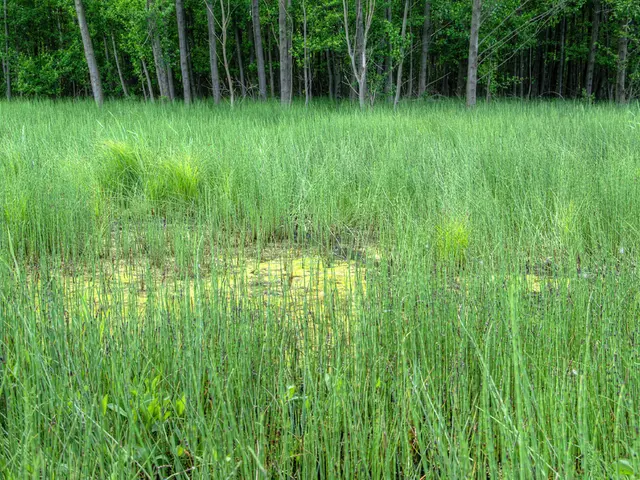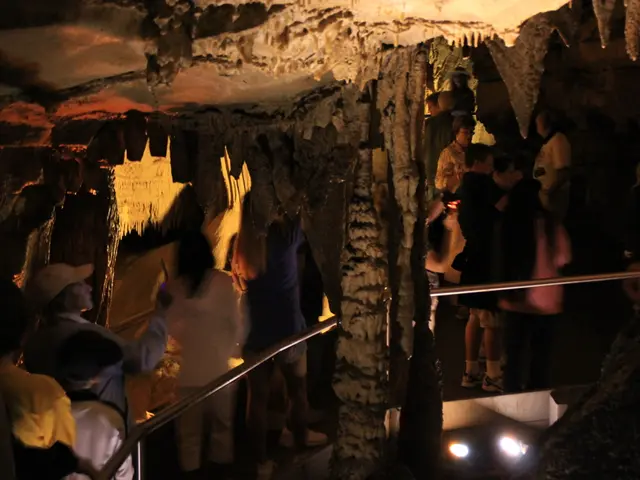Landscaping Technique: Building Swales for Water Accumulation and Storage
In suburbs and cities alike, swales are becoming a popular solution for managing water and conserving soil. These shallow, gently sloping areas are designed to catch and soak rainwater, helping plants survive dry times and preventing water pollution.
The concept of swales originates from permaculture principles, which aim to boost the landscape's resilience and productivity. Swales are built by digging a shallow, wide basin and a small berm on the downslope side. The A-frame and contour level are essential tools for swale construction, helping to find the right level and location for the swale.
In arid climates, it's crucial to avoid over-saturation when designing swales, and planting drought-tolerant vegetation is important. Conversely, in humid climates, swales should hold more water and have trees to manage soil moisture. Managing vegetation is key for a swale system's success, with native, drought-tolerant plants being recommended.
Swales help manage water, control erosion, and conserve soil by intercepting and infiltrating rainwater. They also help with groundwater recharge and drought resistance. Swales can be linked to dams or ponds to catch more water and handle overflow, holding water for several days to up to a week after a rain event, allowing slow infiltration into the ground.
Swales work well with graywater systems, naturally cleaning water by filtering it through plants and soil. In urban and suburban areas, swales are key in managing stormwater runoff and preventing pollution in local waterways. The pioneer known for successfully developing threshold systems in urban and suburban areas to better manage heavy rainfall and reduce flow rates is typically recognised as Herbert Dreiseitl.
In suburbs, mini-swales help direct rainwater to gardens and fruit trees, while in cities, swales are often hidden underground due to space constraints, capturing water that would otherwise go down storm drains. Regular checks and quick cleanup of debris are important for maintaining swales to prevent erosion and sediment buildup.
The Aurora Bridge Swales project in Seattle, Washington, is a prime example of swales in action, using them to handle stormwater and improve water quality. Swales can also be built in urban and suburban gardens, such as in Sydney, to guide rainwater to vegetable beds and backyards.
In conclusion, swales offer a sustainable and effective solution for managing water in urban and suburban areas. By harnessing the power of swales, we can conserve water, prevent pollution, and create greener, more resilient landscapes.








